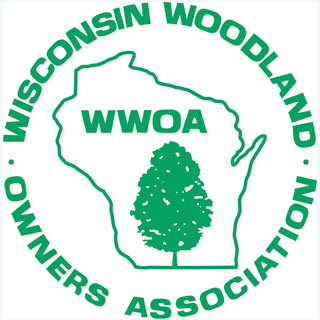News
Oshkosh & Wausau Winter Conferences Update
Oshkosh Woodland Owner Conference will still be held and they are working on providing a Zoom option which will be sent out via email to registrants later today. Wausau Woodland Owner Conference will still be held. If you registered for the in person option and want to switch to Zoom, please send an email to wwoa@uwsp.edu no later than Friday, February 7 at 9 pm. We are unable to fulfill requests after this time.
Invasive Species Action Award Nominations Due Feb. 16
Invasive Species Action Award Nominations Due Feb. 16 Home | Donate | Contact Don’t “forget” to submit your nominations for the 21st annual Invasive Species Action Awards. (Forget-me-not is an invasive species that escapes from landscaping and can spread to nearby forests and natural areas, out-competing a diverse range of native plants!) / Photo Credit: Wisconsin DNR Reminder: Invasive Species Action Award Nominations Due Feb.
DNR Seeking Public Comments
DNR Seeking Public Comments On Proposed Deer Management Unit Rule MADISON, Wis. – The Wisconsin Department of Natural Resources (DNR) today announced the start of a public comment period for a draft rule that would rework portions of the state’s deer management unit boundaries. The public comment period runs until Jan. 10.
NRCS Funding Opportunity
Exciting Funding Opportunity for Forest Landowners in Wisconsin Exciting Funding Opportunity for Forest Landowners in Wisconsin The U.S. Department of Agriculture (USDA) Natural Resources Conservation Service (NRCS) in Wisconsin, is thrilled to announce a rare funding opportunity for forest landowners. The historic amount of funding received through the Inflation Reduction Act will be used to meet producer demand for oversubscribed programs, maximize climate benefits and help landowners address their natural resource challenges.
ARIP Funding
Gov. Evers, WisDOT Announce $50 Million for Rural Road Improvements to Support Wisconsin’s Farmers and Producers, Agriculture Industries Investments secured in recent biennial budget to support 37 projects across 28 Wisconsin counties GREENFIELD — Gov. Tony Evers, together with the Wisconsin Department of Transportation (WisDOT), today announced nearly $50 million in state investments to help support 37 projects across 28 Wisconsin counties.
Survey Wildlife
Become A Community Scientist By Surveying Wildlife For The Wisconsin DNR Help the Wisconsin DNR monitor deer and game birds across the state. / Photo Credit: U.S. Fish and Wildlife Service MADISON, Wis. – The Wisconsin Department of Natural Resources (DNR) today announced that state residents can become community scientists by participating in Operation Deer Watch and the Game Bird Brood Survey, which start statewide on Aug. 1.
Forest Pest Survey and Detection
bugwood.org Emerald Ash Borer Detected in Washburn and Taylor Counties In partnership with the Wisconsin Department of Natural Resources (DNR), the Wisconsin Department of Agriculture, Trade and Consumer Protection (DATCP) has detected emerald ash borer (EAB) for the first time in Washburn and Taylor counties. In Washburn County, DNR Forest Health staff detected this ash tree-killing beetle at a private residence in the Town of Springbrook on April 3.
2024 Spring Hearing Statewide Results Now Available
FOR IMMEDIATE RELEASE: April 29, 2024 Contact: Kari Lee-Zimmermann, Wisconsin Conservation Congress Liaison Kari.LeeZimmermann@wisconsin.gov or 608-219-9134 2024 Spring Hearing Statewide Results Now Available MADISON, Wis. – The Wisconsin Department of Natural Resources (DNR) today announced the 2024 Spring Hearing questions and results are now available. More than 18,800 people responded to the 2024 Spring Hearing questionnaire either in person April 8 or online April 10-13. The results and questions are available on the DNR website.
USDA Seeks Ash Trees to Battle Emerald Ash Borer
Landowners Asked to Donate Infested Ash Trees The U.S. Department of Agriculture (USDA) is asking Wisconsin landowners for their help in fighting the Emerald ash borer (EAB). The pest is an invasive insect from Asia that was first detected in the United States in 2002. Since its discovery, EAB has caused the death and decline of tens of millions of ash trees. USDA is using ash trees to combat the pest.
Help Shape Deer Season For Your Community
Help Shape Deer Season For Your Community Meetings Held Across Wisconsin April 22 – May 2 MADISON, Wis. – The Wisconsin Department of Natural Resources (DNR) and County Deer Advisory Councils are seeking public input to prepare for the 2024 deer season. Each county in Wisconsin has a County Deer Advisory Council that meets annually to provide input and recommendations to the DNR on deer management in its county.
